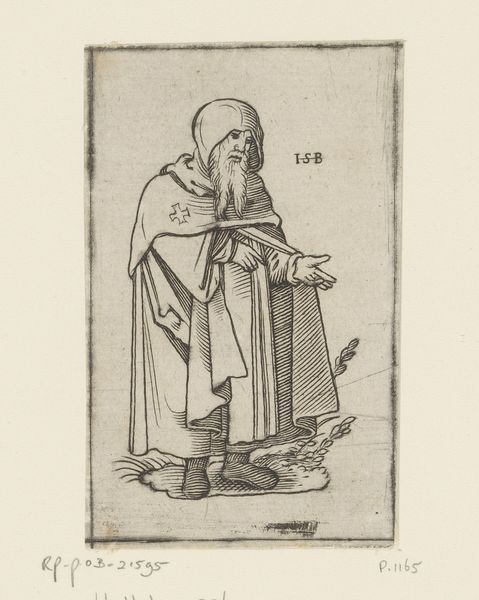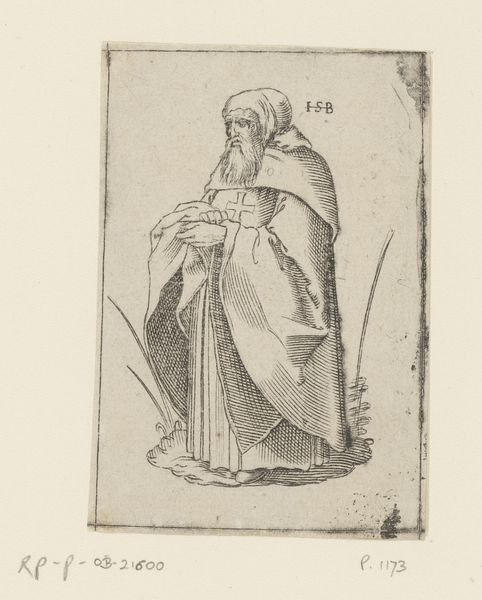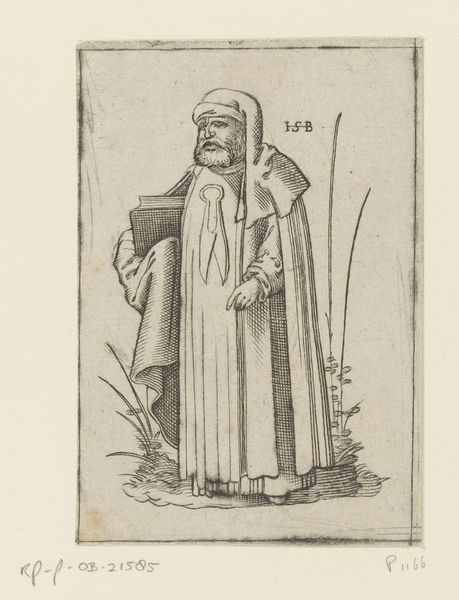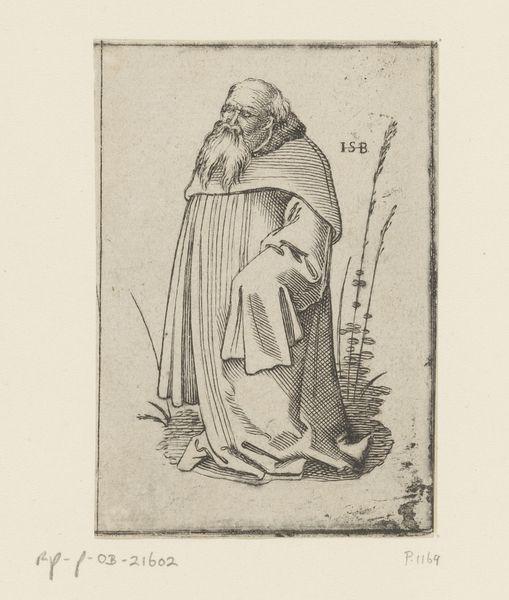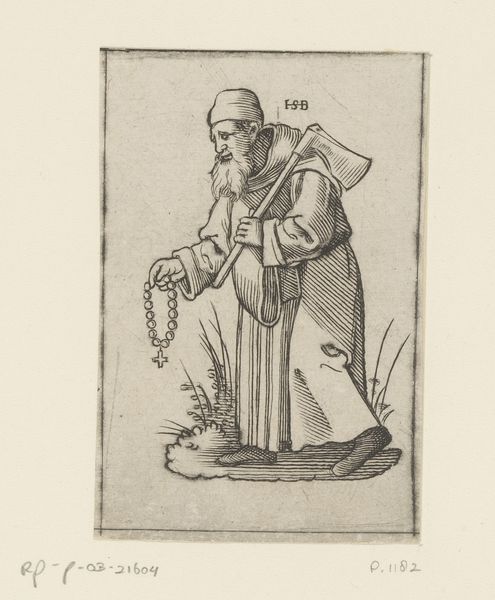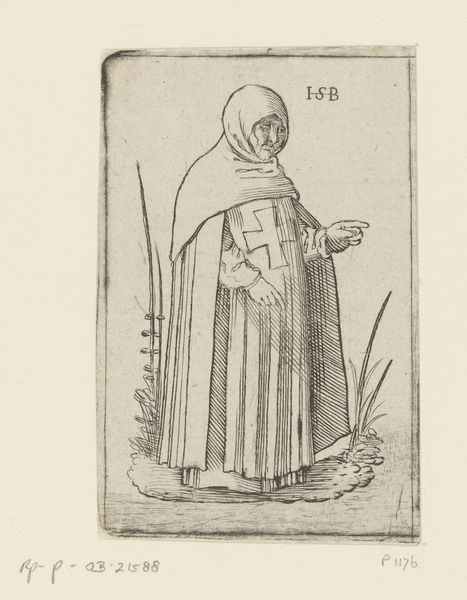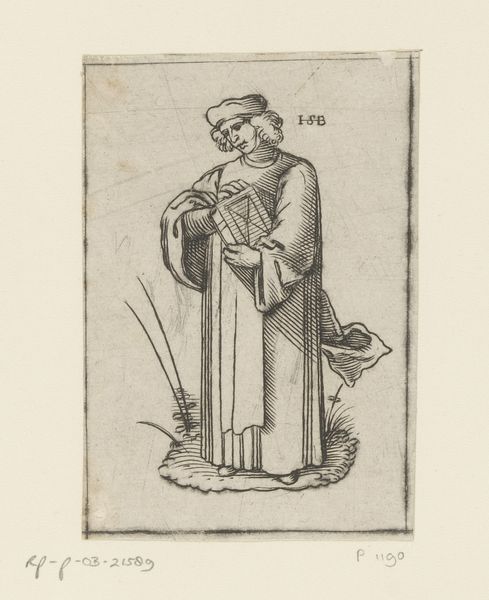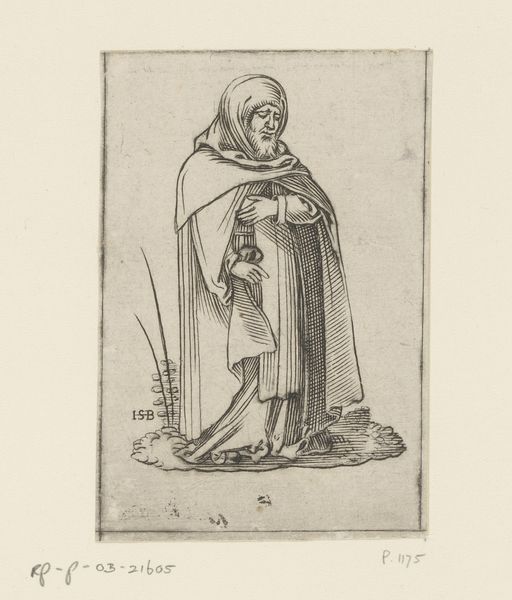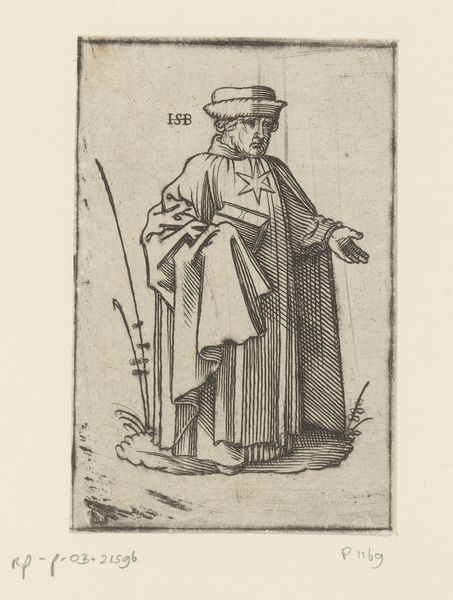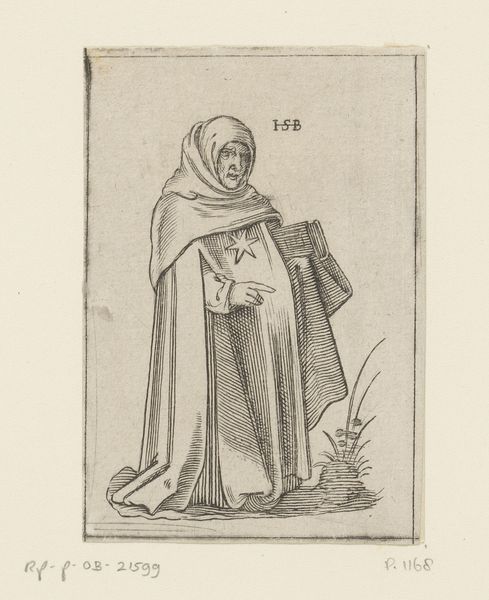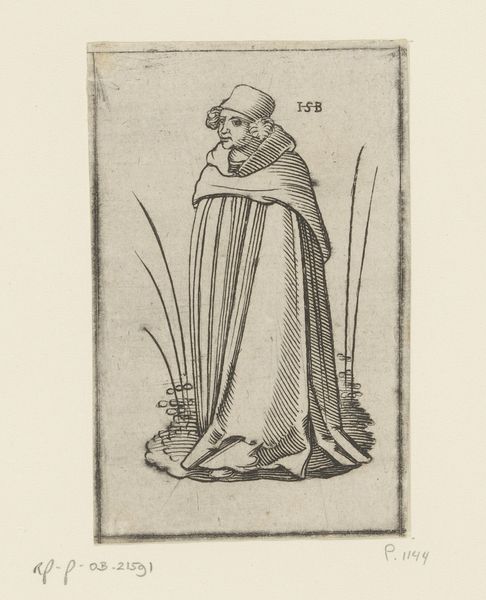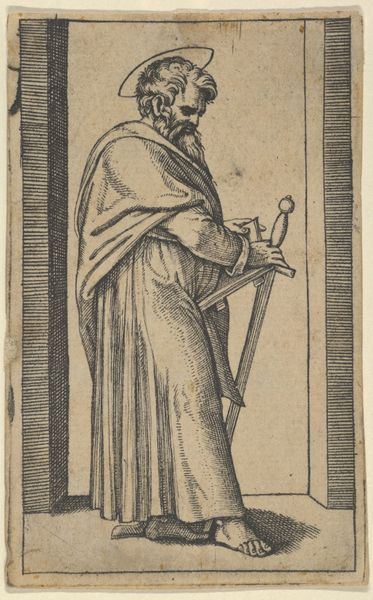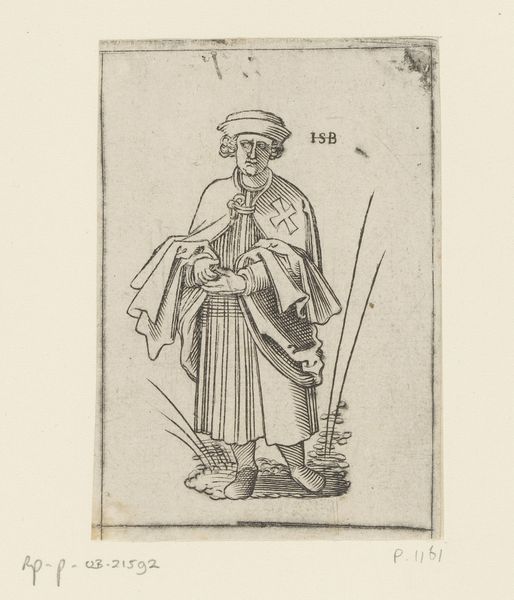
print, engraving
#
portrait
# print
#
figuration
#
northern-renaissance
#
engraving
Dimensions: height 95 mm, width 65 mm
Copyright: Rijks Museum: Open Domain
Curator: This engraving, titled "Monnik van de orde der Tempelieren" or "Monk of the Order of the Templars," dates from after 1526, part of the Northern Renaissance. Its creator remains anonymous, a fact that already raises questions about power, authorship, and knowledge at this historical juncture. Editor: My immediate reaction is of austerity, the stark lines of the engraving really emphasize the simple garments of the monk, creating a feeling of poverty and the renunciation of material goods, a counterpoint to the wealth associated with the crusading order. Curator: Precisely! And it challenges the visual representations of the Knights Templar as exclusively powerful, militarized figures. Here, we have a cloaked, hooded individual who seems rather world-weary, juxtaposing spiritual devotion with, potentially, the unraveling of their social power. Editor: I find it interesting how the engraver uses the stark lines to suggest both volume and texture. You see the way the cloak bunches and folds, giving the impression of a tangible, almost heavy, material. And even more so when you look at the roughness of the long beard and how the fingers of the hand holding the container contrast. Curator: A compelling interpretation! Think of the sociopolitical forces at play during the Renaissance. Religious reform, the rise of humanism – to depict a Templar, an order dissolved nearly two centuries prior, hints at a deeper commentary on faith, history, and perhaps even a yearning for past certainties in an age of upheaval. Was this artist using the past to talk about their turbulent present? Editor: That’s interesting, and looking closer at the material choices adds to that idea; I see printmaking as a distinctly democratic medium – accessible to a wider audience than, say, painting. So, circulating images like this facilitates that conversation, making the monk's identity open for discussion. Curator: Definitely, that’s a thought-provoking connection. In a way, the accessibility of this print fosters dialogue and potentially empowers those who consume it, beyond any fixed narrative. Thank you, it seems even a seemingly straightforward piece can trigger deeper understanding. Editor: Likewise! Focusing on the production details gave another layer to appreciating its artistic nuance while suggesting alternative viewpoints and raising important issues around what is represented.
Comments
No comments
Be the first to comment and join the conversation on the ultimate creative platform.
